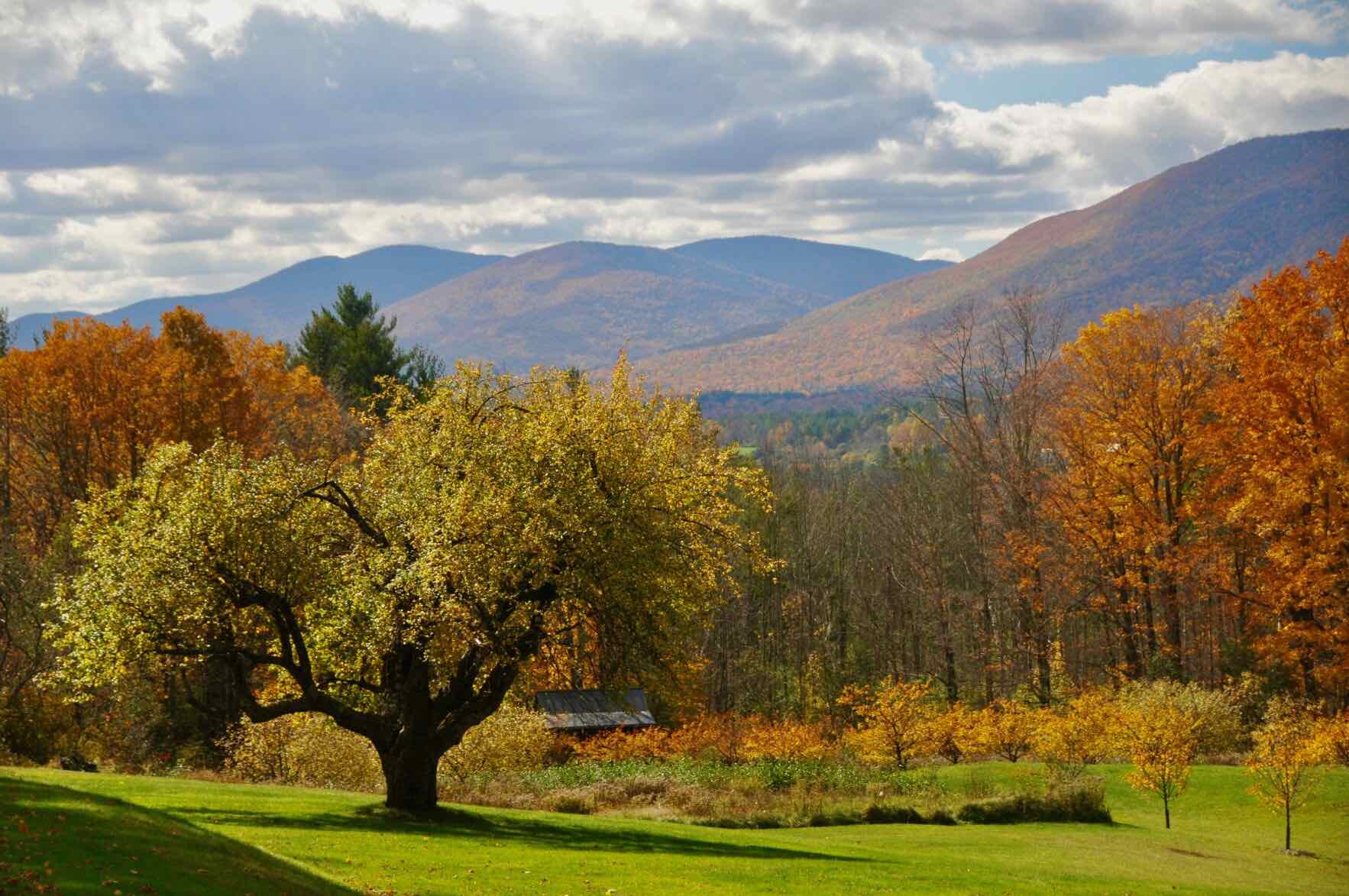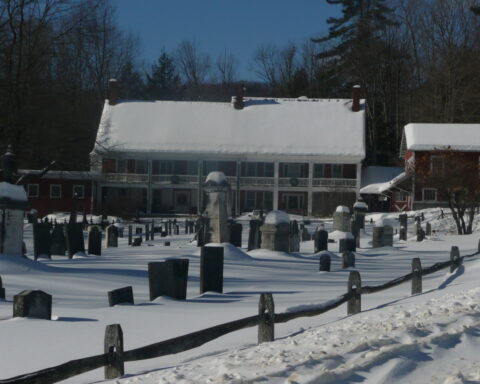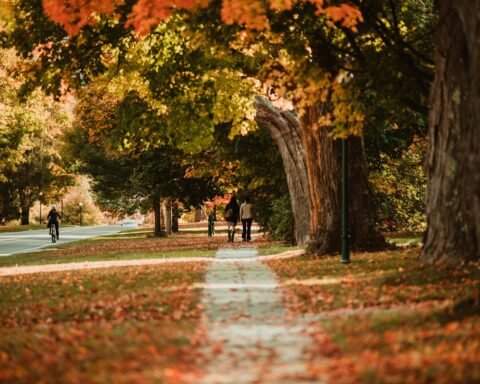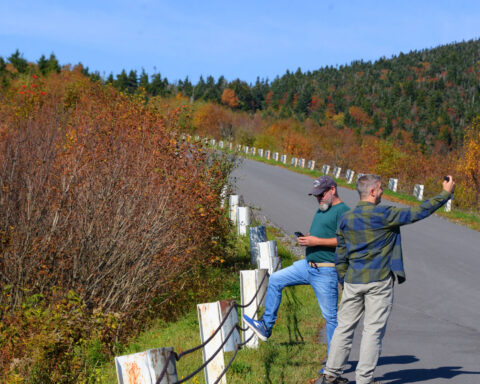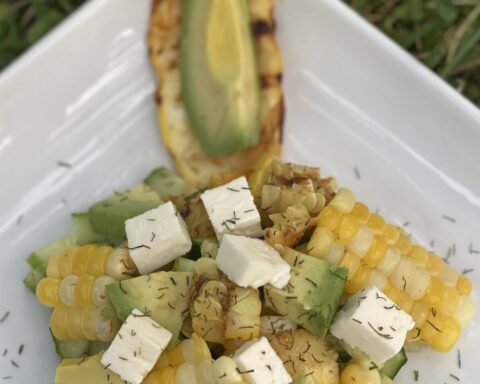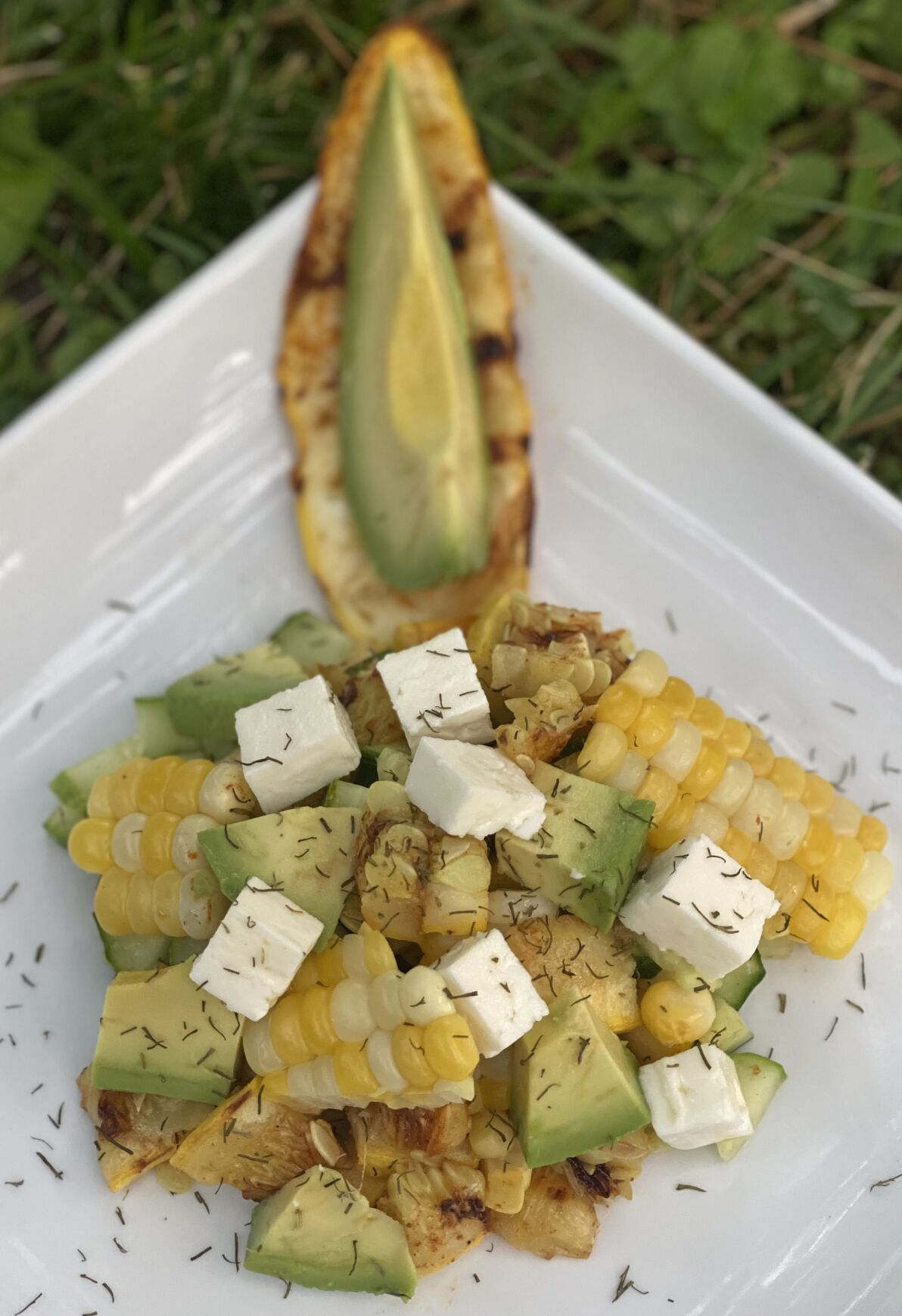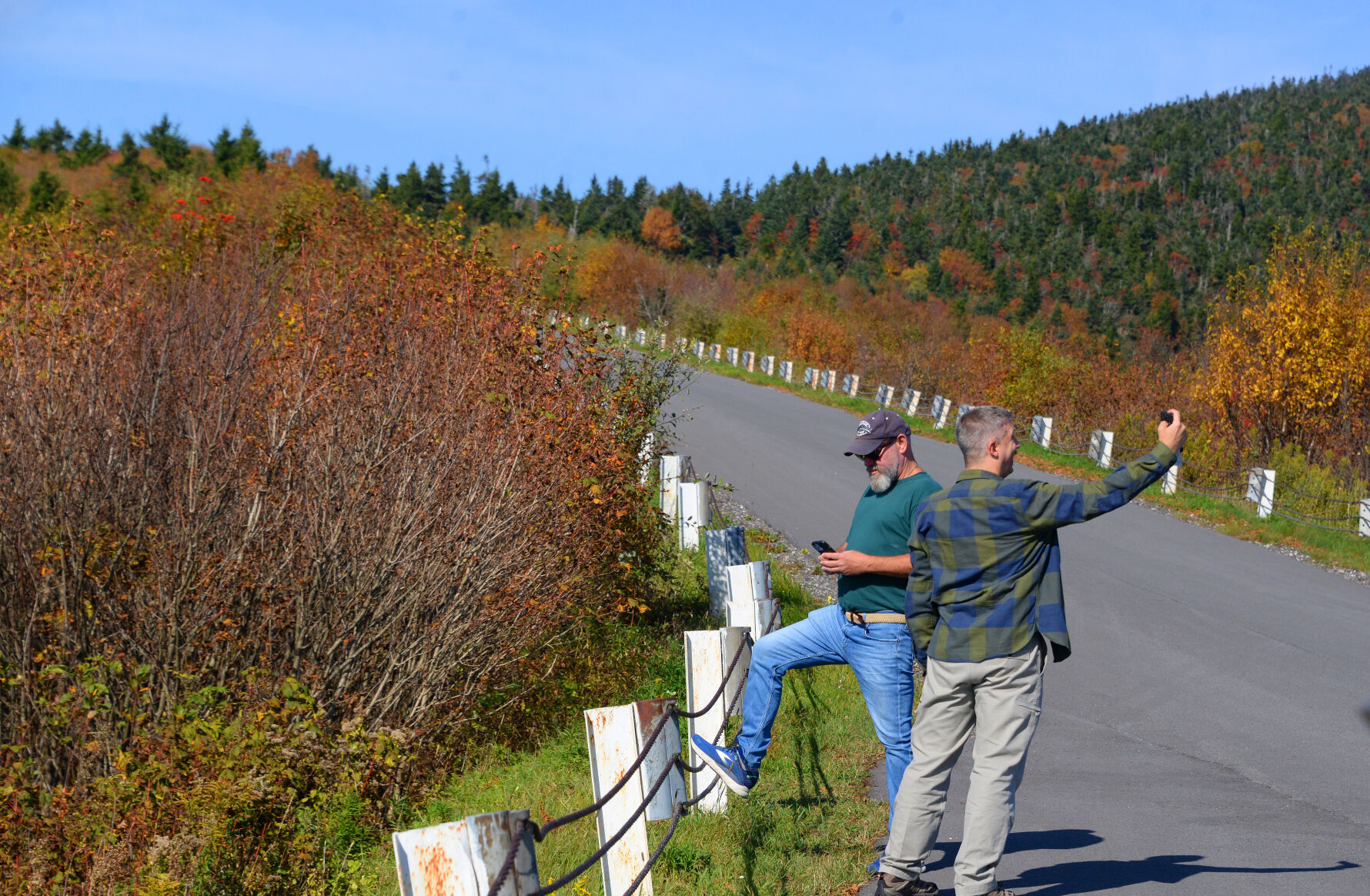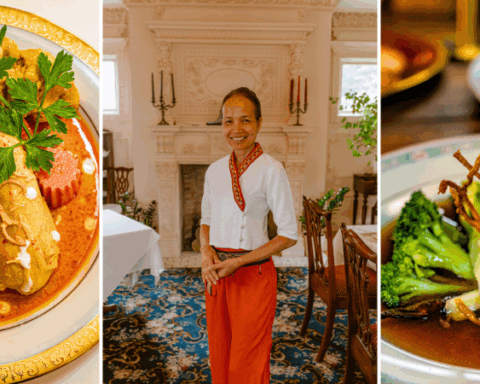By Victor C. Capelli.
As the tired August and September trees begin to tint with leaf tips of hesitant change, so too the browning meadows with their spent dry grasses indenting the rolling green undulating hills foreshadowing and anticipating with their waning wands at the apex of summer and then the gradual descent to tree transported autumn glories.
But where is the lighthearted gaiety of springtime leaves and the bursting effervescent blossoms which once transformed our green hillsides in April, May and June? Where are all the exuberant flowers still yearning for that overhead summer solstice sun soaking the once cold winter earth?
Alas, the eternal seasonal wheel continues to turn. The muted, fading, drooping springtime and summer blooms along with the tired-looking trees and the still-billowing yellow tufts of goldenrod and late summer wildflowers still rioting in the lush green fields and meadows about them are just the early, but telltale harbingers of the inevitable color change to come that will sweep all before it.
Above our heads, the dark inert green of the 400,000-acre Green Mountain National Forest atop that high ridge of a billion-year-old granite gneiss looms starkly down upon us. Those slopes are already prematurely peppered on the upper tree crowns with the barest rainbow flecks of the approaching Vermont color tidal wave coming in September, October and November.
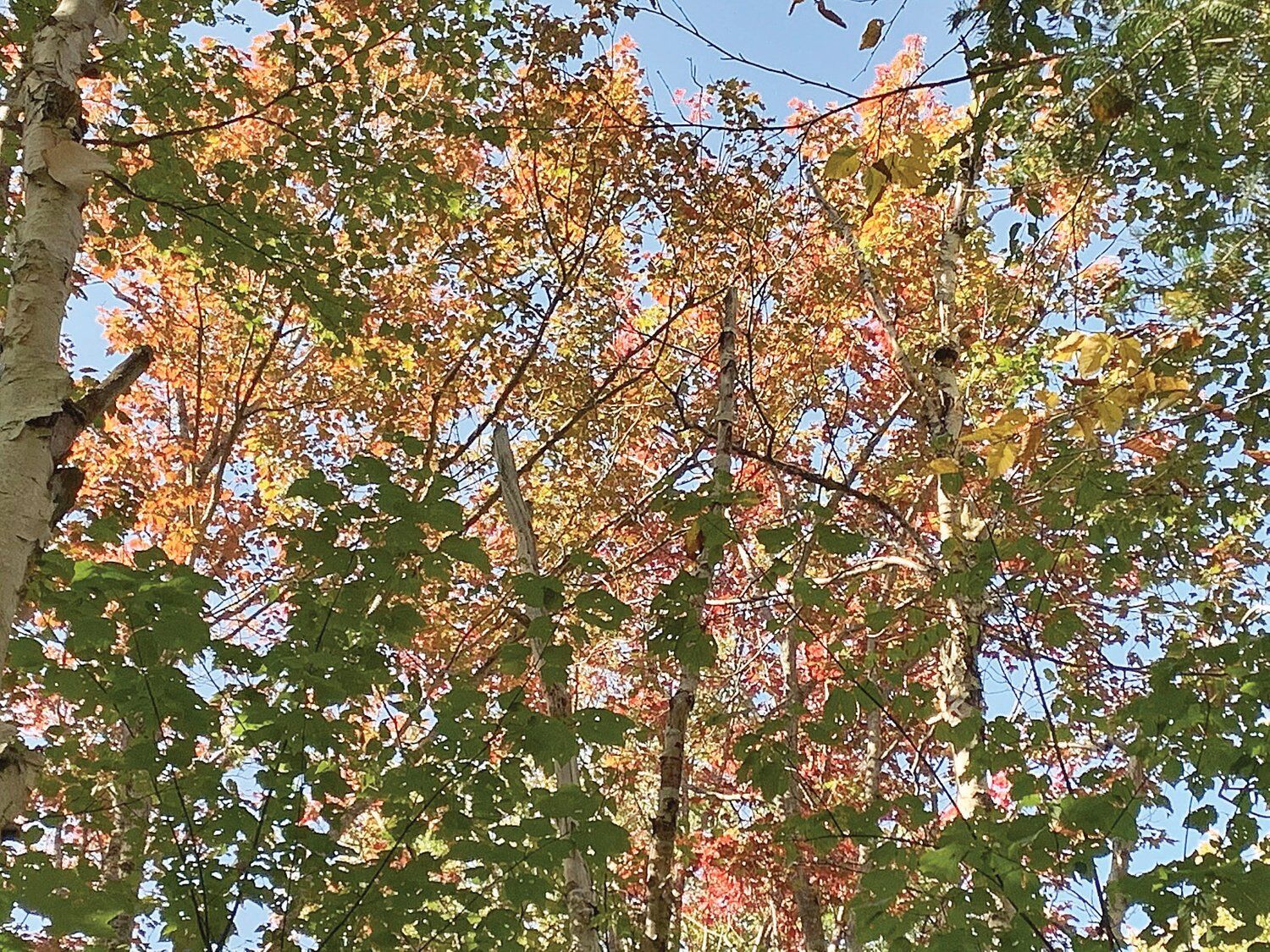
Eighty-eight species of trees make up our forest demographics (native and introduced) and Vermont is the third most forested state in the lower 48, after New Hampshire and Maine, with a 78% tree canopy cover. A full 71% of the forests in the Green Mountain State consist of sugar maple, American beech, yellow birch and hemlock while the remaining species consist of white ash, basswood, red maple, white pine, red oaks, chestnut oaks, red spruce and balsam fir. In bogs and wetlands, black spruce and tamarack are also found. Vermont is a truly unique state in New England because our forests lie within a biological transition zone between the Canadian boreal forest of evergreens to the north and the southern mostly deciduous forests to the south.
With the exception of the change-resistant tawny oaks clinging stubbornly to their tough brown lower lignin-infused leaves (a unique botanical and ecological adaptation called “marcescence” common to oaks, beech and hornbeam in the winter months); the enveloping reign of rainbow spangled leaf brilliance in the Vermont hills soon becomes the supreme optical splendor eclipsing every visual aspect of the autumn landscape that greets our summer-soothed, accustomed and welcoming eyes.
The effusive consuming foliar fire that inflames the Vermont woods in autumn is the pervasive photosynthetic Midas touch of successive leaf pigments appearing from the combined effects of shortening daylight photoperiodism and colder nights triggering the slowdown and eventual shutdown of tree photosynthesis.
The chemical breakdown and disintegration of starchy green chlorophyll in the upper surface of the leaf from dropping air temperatures (below 32 F) expose the underlying red carotene, anthocyanins and yellow xanthophyll pigments beneath. Then, the formation of a corky stem plug called the abscissa that joins the leaf stem and the tree branch shuts off the flow of sap to and from the trunk and roots, cutting off leaf metabolism altogether.
Carotene is the most common and most stable of the leaf pigments and when all the chlorophyll finally disappears, it is only the reddish carotene pigment remaining which makes the leaf appear yellow. A cold snap will often hasten the change but strong sunlight will destroy the remaining chlorophyll in the leaf.
The gentle fluttering drop of every leaf to the thick forest floor duff is nature’s promise. Most deciduous trees by July and August have fully formed leaf buds on their stems underneath and are ready to go for next year’s spring growth.
Every tree species has a color scheme in the autumnal palate that proclaims its genetic and physical heritage arising from the leaf pigments present below the green chlorophyll leaf lattice we see. Every tree species contributes its own particular piece to the visual pie and the colorful pageant that parades before us.
Birches (Betula sp.), usually exhibits yellow-orange simple serrated leaves like the white or canoe birch or the yellow birch, which, out of the six common species of birch in Vermont, is the longest lived and largest birch species in the forest. A yellow birch has distinctive long, shaggy yellowish bark when it is old as opposed to the white birch with its brilliant white and black creased bark. The birches’ yellow leaf colors are owed primarily to carotene. Other species like the red maple (Acer robur), with its sharp, three-pointed leaf, is the first maple to turn bright crimson from the dominant anthocyanin pigments. Red maple is also called the swamp maple because it prefers to grow in wet, soggy soils. Interestingly, higher soil acidity will make red maple leaves even darker red.
Staghorn sumac (not be confused with poison sumac and named for its furry, velvet-like, antler-like stems) also turns a scorching scarlet red from the overwhelming presence of anthocyanins. Their long, red, serrated pinnate leaves along with their sweet tasty reddish berries (make a great lemonade!) are fiery exclamation points at the edges of fields and meadows preceding the tree colors invading the hills. Their shrubby explosions of leaf fire jabs like swords at the dull green background of the forest edge. Red oaks and scarlet oaks (both found in Vermont) also display vivid reddish leaves because of the abundance of anthocyanins which take over as soon as the green chlorophyll departs.
The leaves of the ashes, on the other hand, display sharp contrast to the sharp red and orange tints about them. White, green or red ashes (genus Fraxinus) along with hickories (shagbark, pignut, bitternut or mockernut) and the walnuts (butternut or black walnut), simply turn a bright lemon or orange-yellow from the dominant carotene pigment and then drops off, falling to the sere forest floor already covered by their ripening nuts ready for the squirrels’ feast and larder.
Not to be outdone by this leafy competition, the eastern cottonwood (Poplus) and all the aspens are the yellow counterpoints to the scintilla of the incoming flood of painted trees on the burnt umber hillsides of Vermont. Especially the leaves of quaking aspen (Poplus tremuloides) with their flat bladed stems, which quiver like a pulsating living heart in the cool northern breezes racing down the ridges of the Green Mountains.
But the sugar maple (Acer sacchrum) is the quintessential element of Vermont’s blaze of glory that detonates before our eyes every year. This species, out of all the deciduous trees in the Northeast forest, has the unique botanical gift of phytochemical combinations of all four pigments present in its leaves, beginning with the fall fading away of green chlorophyll in each leaf and then slowly exposing the orange red carotenoids, yellow xanthophyll and anthocyanin pigments descending from the top of the tree down to the lowest branches. Sugar maple leaves often turn pure red in the presence of sunlight or a bland yellow in the shade depending on their genetic makeup, weather and location.
An inconspicuous Clark Kent deftly hid and cloaked within the green clad anonymity of its green clad peers, this unassuming deciduous tree with the shortening of days and colder nights suddenly breaks out of the pack like a stunning Superman of fall foliage, in a spectacular uniform unrivaled in the community of New England forest trees.
The sugar maple, the state tree of Vermont, is the dominant deciduous tree species in Vermont. Twenty percent of our forest tree canopy, one in every four trees, consists of sugar maples. Out of Vermont’s 3.4 billion trees total, sugar maple alone is responsible for 2.4 million cords of tree growth annually. The sugar maple is joined by all its maple relatives: the Norway maple, (a non-native invasive species which doesn’t have the same magical chemical charisma as its cousin), the red maple, the silver maple (a maple with thrice dissected leaves), the striped maple (also called Moosewood), mountain maples, black maples, the Japanese maple (an Asian ornamental) and the box elder or ash leaved maple (a newcomer from the west) have all begun their transformation to the leaf incandescence that have made this state a tourist mecca for leaf peepers the world over. The leaf peeping boom attracts 3.4 million visitors every year to our state and contributes more than 25% of tourist revenue and approximately $600 to 800 million to the economy.
As the season rolls unceasingly through the golden hills of Vermont, we can only savor these colorful gifts of nature that bathe our eyes with captivating beauty, fleeting in the insistent autumn winds gathering and scurrying the fallen leaves so recently adorned on the green clasped mountain trees and which now tumble about aimlessly in the woodland snow-covered aisles of winter at the cold dark nadir of the year.
Victor C. Capelli is a retired environmental educator, environmental analyst and nature illustrator.
